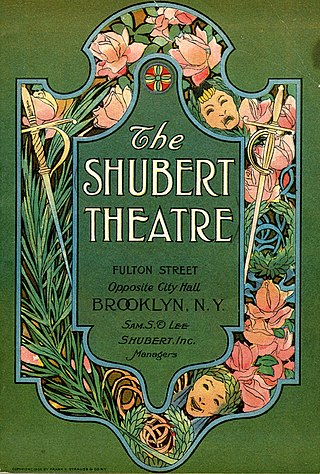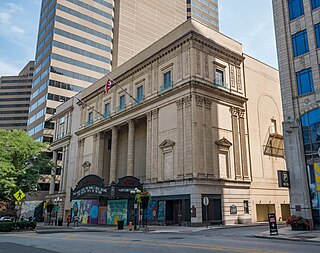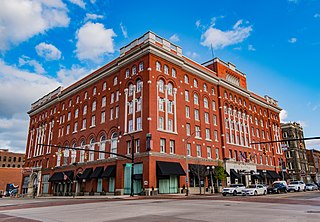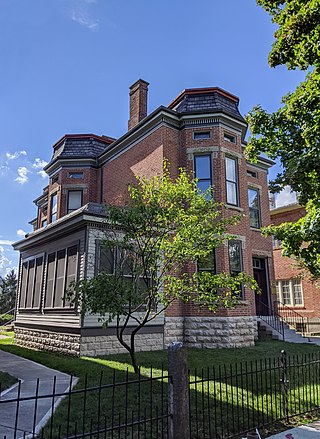
The Columbus Association for the Performing Arts (CAPA) is non-profit arts and theater management organization based in Columbus, Ohio.

The Columbus Association for the Performing Arts (CAPA) is non-profit arts and theater management organization based in Columbus, Ohio.
CAPA was formed in 1969 by Robert Karlsberger, Lawrence L. Fisher, Jean Whallon, and Scott Whitlock to raise money to save the Ohio Theatre, a 1928 movie palace, from demolition and revive it for use as a performing arts center. [1]
CAPA's initial success in restoring and operating the Ohio has led over the years to a great expansion of its activities. It took over ownership and operations of the Palace Theatre in the early 1990s. In 1998 it purchased and completely rebuilt and restored the historic 1890s Southern Theatre. Later CAPA took over management of Columbus's Capitol Theater complex for the State of Ohio.
Outside of Columbus, CAPA managed the historic Chicago Theatre from 1998 to 2003, [2] and took over operations of the Shubert Theatre in New Haven, Connecticut in 2001. [3]
CAPA was responsible for overseeing the 2009 $13.5 million renovation of the Lincoln Theatre in Columbus's historic King-Lincoln neighborhood. CAPA will also operate that theater, combining with ten local arts organizations to provide a varied slate of events for the new community arts center. [4]
The most recent addition to the list of theaters operated by CAPA is the Valentine Theatre in Toledo, Ohio. On June 22, 2009 the Toledo Cultural Arts Center announced that they had initiated a five-year agreement with CAPA to oversee operations of the 114-year-old landmark theater. Recently the recipient of a multimillion-dollar renovation, the theater is home to forty of Toledo's performing arts groups, including the Toledo Symphony Orchestra. [5]
In addition to operating theaters, CAPA oversees administrative operations for the Columbus non-profit cultural groups Franklin Park Conservatory, Opera Columbus, Contemporary American Theatre Company and Phoenix Theatre for Children. [5]
CAPA is a non-profit organization overseen by an independent board of directors. Its main offices are located in the Ohio Theatre building at 55 E. State St and the President & CEO was William B. "Bill" Conner, Jr. [6] prior to his death of cancer in October 2016. [7]

Lincoln Center for the Performing Arts is a 16.3-acre (6.6-hectare) complex of buildings in the Lincoln Square neighborhood on the Upper West Side of Manhattan. It has thirty indoor and outdoor facilities and is host to 5 million visitors annually. It houses internationally renowned performing arts organizations including the New York Philharmonic, the Metropolitan Opera, the New York City Ballet, the Chamber Music Society of Lincoln Center, and the Juilliard School.

The Boch Center is a 501(c)(3) nonprofit performing arts organization located in Boston, Massachusetts. It manages the historic Wang and Shubert theatres on Tremont Street in the Boston Theater District, where it offers theatre, opera, classical and popular music, comedy, dance, and Broadway musicals. The center also offers a diverse mix of educational workshops and community activities; collaborates with artists and local performing arts organizations; and, acts as a champion for the arts in the Greater Boston community by aggressively helping to make the arts an integral part of the community's collective, daily experience. It maintains partnerships with numerous arts organizations in Boston, including the Celebrity Series of Boston, Fiddlehead Theatre Company, Express Yourself, and more.
Shubert Theatre or Shubert Theater may refer to:

The Shubert Organization is a theatrical producing organization and a major owner of theatres based in Manhattan, New York City. It was founded by the three Shubert brothers in the late 19th century. They steadily expanded, owning many theaters in New York and across the United States. Since then it has gone through changes of ownership, but it is still a major theater chain.
Palace Theatre, or Palace Theater, is the name of many theatres in different countries, including:

The Ohio Theatre is a performing arts center and former movie palace on Capitol Square in Downtown Columbus, Ohio. Known as the "Official Theatre of the State of Ohio", the 1928 building was saved from demolition in 1969 and was later completely restored. The theater was declared a National Historic Landmark in 1977 as one of the nation's finest surviving grand theaters.
The Shubert Theatre is a 1,600-seat theatre located at 247 College Street in New Haven, Connecticut. Originally opened in 1914 by The Shubert Organization, it was designed by Albert Swazey, a New York architect and built by the H.E. Murdock Construction Company. It is currently operated as a non-profit organization by CAPA under the aegis of the Columbus Association for the Performing Arts.
The Near East Side is a neighborhood located near downtown Columbus, Ohio, made up of several neighborhoods: Mount Vernon, King-Lincoln Bronzeville, Eastgate, Franklin Park, Nelson Park, Olde Towne East, and Woodland Park.

The Victoria Theatre is a historic 1,154-seat performing arts venue located in downtown Dayton, Ohio. The Victoria hosts a variety of events including theatre, music, dance, film, and comedy.

The Connecticut Gay Men's Chorus (CGMC) is Connecticut's first and, until 2012, its only performing arts organization composed of openly gay men — though their rules have been changed, and now any person who self-identifies as male may join, regardless of sexual orientation or preference. It was begun in 1986 by a small group of gay men under the directorship of Robert Read and led by him until 1992. Since 1986 the Chorus has rehearsed in the gymnasium of St. Thomas's Episcopal Church in New Haven.

King-Lincoln Bronzeville is a historically African American neighborhood in Columbus, Ohio. Originally known as Bronzeville by the residents of the community, it was renamed the King-Lincoln District by Mayor Michael B. Coleman's administration to highlight the historical significance of the district's King Arts Complex and Lincoln Theatre, amid collaborations with investors and developers to revitalize the neighborhood.

The Palace Theatre is a 2,695-seat restored movie palace located at 34 W. Broad Street in Columbus, Ohio. It was designed and built in 1926 by the American architect Thomas W. Lamb as part of the American Insurance Union Citadel. Today the theater functions as a multi-use performing arts venue. It is owned and operated by The Columbus Association for the Performing Arts. The Palace Theater's "house" is considered separate from LeVeque Tower, while the marquee and lobby are part of the LeVeque complex.

The Great Southern Hotel & Theatre is an historic hotel and theater building in Downtown Columbus, Ohio. The building currently operates as the Westin Great Southern Columbus and the Southern Theatre.

B. Gunar Gruenke is a stained glass artist in Wisconsin.

The Standard Theatre, now known as the Folly Theater and also known as the Century Theater and Shubert's Missouri, is a former vaudeville hall in downtown Kansas City, Missouri. Built in 1900, it was designed by Kansas City architect Louis S. Curtiss. The theater was associated with the adjoining Edward Hotel, which was also designed by Curtiss; the hotel was demolished in 1965.

The Lincoln Theatre is a 582-seat performing arts venue located at 769 E. Long Street in the King-Lincoln Bronzeville neighborhood of Columbus, Ohio. The theater is owned by the City of Columbus under the auspices of the Lincoln Theatre Association. Operation of the facility is managed by CAPA. It was listed on the National Register of Historic Places in 1992.

The Martin Luther King Jr. Performing and Cultural Arts Complex is a historic building in the King-Lincoln Bronzeville neighborhood of Columbus, Ohio. It was built in 1925 as the Pythian Temple and James Pythian Theater, and was added to the National Register of Historic Places and Columbus Register of Historic Properties in 1983. The building was renovated into the King Arts Complex in 1987, and was vacated in 2019. Community leaders restored the building's use as an arts center in 2021.
The culture of Columbus, Ohio, is particularly known for museums, performing arts, sporting events, seasonal fairs and festivals, and architecture of various styles from Greek Revival to modern architecture.

Second Presbyterian Church is a historic church building in Downtown Columbus, Ohio. It was built in 1857 in a Romanesque style and was added to the National Register of Historic Places in 1983. It closed on November, 2011. The site was previously the location of the first public school in Columbus, built in 1826.

The Columbus Landmarks Foundation, known as Columbus Landmarks, is a nonprofit historic preservation organization in Columbus, Ohio. The foundation is best-known for its list of endangered sites in the city and its annual design award, given to buildings, landscapes, and other sites created or renovated in Columbus. It was established in 1977 as a project of the Junior League of Columbus, Ohio, following the demolition of the city's historic Union Station. It is headquartered at 57 Jefferson Avenue, a contributing structure in the Jefferson Avenue Historic District in Downtown Columbus.